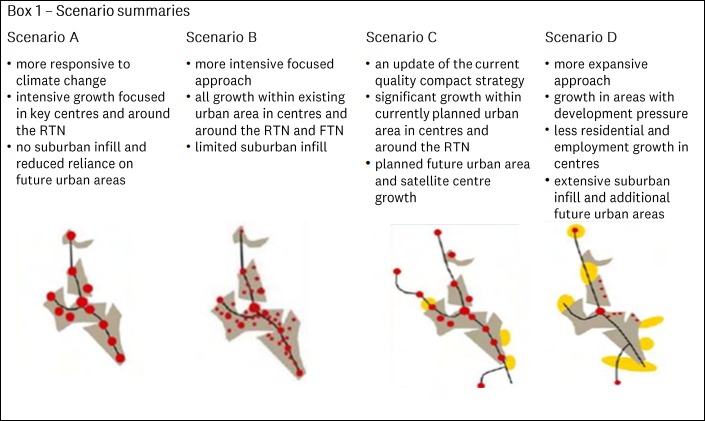Stopping sprawl and turning Auckland into an efficient, green city? Sign us up, Mayor Wayne Brown!
On Friday 31 October, the Mayor and councillors were officially sworn in, and the Mayor made a speech outlining his priorities for the coming term. Notably, this included what might even be considered a bit of a vision for the city – something that was lacking three years ago, when his focus was far more pointed at the council’s budget.
From the Herald:
Auckland must change from the world’s largest suburb to a global city, Mayor Wayne Brown said at his inauguration speech this evening.
…..
After being elected in 2022 on five policies – stop wasting money, finish big infrastructure projects, take back control of council organisations, speed up traffic and get more from the harbour – Brown outlined five new policies for his second, and final, term.
They are:
Upgrading transport in Auckland from appalling to quite good.Getting consensus on a new intensification plan for the city and stopping the building of homes on floodplains.A sharper focus on economic growth for Auckland.Making the city centre more inviting for business and leisure activities.Getting a “city deal” across the line with the Government.
Brown said this last policy was an opportunity for the Government to start treating Auckland with the respect it is due.
The mayor delivered several pointed messages to the Government, noting the upcoming general election and urging the Government to recognise Auckland’s strategic importance.
“The Government is pushing us to have more greenfields, but, other than Drury, that’s not going to happen.
“We must change Auckland from the world’s largest suburb to a global city. It’s already embarrassingly known as the city of sprawl. It’s not economical and it’s not environmental. I want an efficient, green city,” Brown said.
An efficient, green city is getting close to former Mayor Len Brown’s vision of “the world’s most liveable city”.
Mayor Wayne Brown is right that sprawl is neither economical nor environmental. Those greenfield areas need a lot of infrastructure – such as transport links, parks, three waters and community facilities – to support the residents who would live in them. And that doesn’t come cheap to build or maintain, especially not these days.
Back in 2019, the estimated cost for just the transport infrastructure alone was expected to top $10 billion, with the actual figure likely working out at over $100,000 per new home. Given the cost inflation we’ve seen recently, the bill could easily be more than double that now – and developers have baulked at the proposals by the Council to cover some of that with increased development contributions.
All that cash is investment that could instead be used to enable more development and more homes within the existing urban area, with the additional benefit of also improving the lives of existing residents. More neighbours, more services, more commerce, more lively shopping areas, and so on.
In 2023, the council’s Future Development Strategy looked at different options for growing the city, including one that included expansive greenfield growth options (Scenario D).
There’s a lot of detailed work assessing these options, but among the key themes from that assessment as summarised in the main report you’ll find:
Land use and infrastructure integration, particularly transport, is fundamental to spatial outcomes
Scenarios that focused growth within the existing urban area and specifically within the walkable catchments of the planned RTN/FTN performed better against transport criteria specifically but also environmental, social, cultural and economic criteria.Compact urban forms perform better in terms of least monetary cost of infrastructure over time, as they result in more efficient use of existing services and new infrastructure. More expansive urban forms require the greatest amount of new infrastructure with the most significant costs.
Locating homes and jobs in close proximity is important
Generally, the more intensive scenarios, with a mix of uses around transport nodes, performed better in relation to reducing the need to travel (to employment, education services etc) and therefore reducing carbon emissions and the cost of travelling.
Despite all this and other evidence, Auckland Council does still allow for more sprawl (see Drury, currently under way) – and now the government is champing at the bit to allow even more of it.
Just last week, the government (in the form of Chris Bishop, Minister of Housing, Infrastructure, RMA Reform, and Transport, also Associate Finance Minister) issued a formal statement of expectation for the panel reviewing the new plan change, that they “test the appropriate distribution of housing capacity (including greenfield development)“.
This would appear to double down on the Minister’s previous scorn regarding what he called Auckland Council’s “weird aversion to new greenfield housing” (aka sprawl), while nonetheless insisting he’s “returning decision-making to locals”:
“I am confident the PC120 process will ensure local voices are at the centre of decisions on Auckland’s growth, while creating more housing options, making the most of the City Rail Link, and setting the city up for the future.”
I imagine that both the mayor and government will be keen to secure their points of view in any city deal they arrive at. And the mayor himself seems to be hoping that central government elections next year will help him in winning the argument, with the incumbent government needing to woo and win Auckland.
As well as the election, I also think that the City Rail Link might play a part in getting the city deal over the line. As CRL gets closer to opening, both the government and council will be keen to answer the question of “what next” – and the government in particular will need to show they’re doing something.
What else could be in that city deal?
PS As of this morning, Plan Change 120 (PC120: Housing Intensification and Resilience) is now open for consultation, through to 5pm Friday 19 December. We’ll have more coverage of this in coming weeks.
Share this


